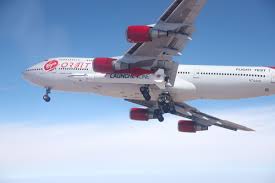
Breaking News
 LIVE ELECTION RESULTS: New York mayor, NJ & VA governor, Prop 50, Trump endorsements, latest vote
LIVE ELECTION RESULTS: New York mayor, NJ & VA governor, Prop 50, Trump endorsements, latest vote
 Sen. Markwayne Mullin Reveals Schumer Held Secret BACKROOM MEETING...
Sen. Markwayne Mullin Reveals Schumer Held Secret BACKROOM MEETING...
 RIP NYC - Muslim Communist Zohran Mamdani Wins New York City Mayoral Race
RIP NYC - Muslim Communist Zohran Mamdani Wins New York City Mayoral Race
 Dramatic Footage Shows UPS Cargo Jet Crashing At Louisville Airport
Dramatic Footage Shows UPS Cargo Jet Crashing At Louisville Airport
Top Tech News
 Japan just injected artificial blood into a human. No blood type needed. No refrigeration.
Japan just injected artificial blood into a human. No blood type needed. No refrigeration.
 The 6 Best LLM Tools To Run Models Locally
The 6 Best LLM Tools To Run Models Locally
 Testing My First Sodium-Ion Solar Battery
Testing My First Sodium-Ion Solar Battery
 A man once paralyzed from the waist down now stands on his own, not with machines or wires,...
A man once paralyzed from the waist down now stands on his own, not with machines or wires,...
 Review: Thumb-sized thermal camera turns your phone into a smart tool
Review: Thumb-sized thermal camera turns your phone into a smart tool
 Army To Bring Nuclear Microreactors To Its Bases By 2028
Army To Bring Nuclear Microreactors To Its Bases By 2028
 Nissan Says It's On Track For Solid-State Batteries That Double EV Range By 2028
Nissan Says It's On Track For Solid-State Batteries That Double EV Range By 2028
 Carbon based computers that run on iron
Carbon based computers that run on iron
 Russia flies strategic cruise missile propelled by a nuclear engine
Russia flies strategic cruise missile propelled by a nuclear engine
 100% Free AC & Heat from SOLAR! Airspool Mini Split AC from Santan Solar | Unboxing & Install
100% Free AC & Heat from SOLAR! Airspool Mini Split AC from Santan Solar | Unboxing & Install
Virgin Orbit's "flying launchpad" completes first captive carry flight

Virgin Orbit's Cosmic Girl took to the skies over Southern California on November 18, 2018 carrying a 70-ft-long (21-m) rocket for the first time. The specially modified 747-400 "flying launchpad" with the LauncherOne small-satellite booster under its port wing took off from Victorville, California on an 80-minute test flight designed to assess the take-off, landing, and low-speed handling and performance of the integrated aircraft and carbon-fiber two-stage rocket.
According to Virgin Orbit, Sunday's test flight by Sir Richard Branson's small satellite launch company was the first in a series leading up to an actual orbital launch early next year. Virgin Orbit CEO Dan Hart called it "a picture-perfect flight, and a major step forward in our quest to bring a new capability to small satellite launch."
The modified passenger aircraft and its rocket cargo are scheduled to carry out more tests over the coming months to gather more flight data on how well the mated systems work, as well as the robustness of the liquid-fueled rocket's composite design, avionics, and onboard computers. This will culminate in a dead-drop of the rocket without its engine firing to provide additional flight data during free fall. After its initial launch mission, Virgin Orbit plans to carry out several launches per year.



